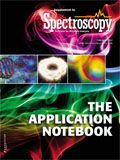Analysis of Wear Metals and Additive Package Elements in New and Used Oil Using the Optima 8300 ICP-OES with Flat Plate Plasma Technology
Application Notebook
The Optima 8x00 ICP-OES series utilizes the new Flat Plate plasma technology that replaces the traditional helical coil design used since the inception of the inductively coupled plasma. The Flat Plate plasma technology, as seen in Figure 1, utilizes two flat induction plates to produce a plasma that is compact, dense, and robust. This plasma utilizes about half the argon required by previous helical coil designs while still delivering exceptional analytical performance.
The Optima™ 8x00 ICP-OES series utilizes the new Flat Plate™ plasma technology that replaces the traditional helical coil design used since the inception of the inductively coupled plasma. The Flat Plate plasma technology, as seen in Figure 1, utilizes two flat induction plates to produce a plasma that is compact, dense, and robust. This plasma utilizes about half the argon required by previous helical coil designs while still delivering exceptional analytical performance.

Figure 1: Torch-box of an Optima 8300 spectrometer showing the revolutionary Flat Plate plasma technology.
Experimental Conditions
Instrumentation
Data were collected using the PerkinElmer® Optima 8300 ICP-OES with a CETAC® ASX-1400 stirring autosampler (CETAC Technologies® , Omaha, Nebraska).
All solutions were prepared with a CETAC® APS-1650 Automated Prep Station. Calibration standards were made using three V23 (VHG Labs® ) blended standards at 500, 100, and 50 ppm. The V23 standards contain 23 elements (Ag, Al, B, Ba, Ca, Cd, Cr, Cu, Fe, K, Mg, Mn, Mo, Na, Ni, P, Pb, Sb, Si, Sn, Ti, V, and Zn) in 75 centistoke (cSt) hydrocarbon oil. A higher-concentration calibration standard for the additive elements was prepared using Metals Additives Standard 4 (VHG Labs) which contains Ca at 5000 µg/g plus Mg, P, and Zn at 1600 µg/g. The solvent for all cases was V-Solv™. The solvent for all dilutions was a solution of 2.5 g of a 6% cobalt standard (in mineral spirits) added to one gallon of V-Solv™.
All samples and standards were diluted 1:10 with V-Solv™ (containing cobalt) on a CETAC® APS-1650 Automated Prep Station. The prep station picks up the oil from standard 2–4 oz bottles or 3 mL sample cups, dispenses the oil into an autosampler tube, adds solvent, and mixes the sample directly in the autosampler rack. The sample preparation is done on a volume-to-volume basis.
Forty-five sample bottles, or 90 samples poured into small sample cups for dilution, can be prepared in a batch, which requires approximately 35 s preparation time per sample. All sample information is transferred directly from the APS-1650 software into the WinLab32 software. Only 5 mL of diluted solution is required for the analysis. Cobalt is used during the analysis as an internal standard to overcome the matrix suppression caused by different oil viscosities.
ICP sample analysis time can be greatly reduced by adding a sampling valve to the ICP such as the CETAC® ASXpress™. A standard analysis system relies upon a single peristaltic pump to both deliver samples to the nebulizer and rinse the sample flow path between sample deliveries. The ASXpress™ system utilizes a high-speed vacuum pump in addition to the ICP-OES peristaltic pump.
Results and Discussion
Analysis time per sample was 25 s, which includes washing between samples and two replicate readings per sample. Two check standards for low (wear metal — 50 mg/L) and high concentrations (additive elements — 1600 mg/L), were analyzed every 20 to 40 samples with upper and lower limits set at ±10%. With the stability of the Optima 8300 system, the check standards rarely failed in an 8–10 h period. If a check standard should fail, the action selected in the software is to recalibrate, rerun the check standard to verify it is within limits, and then rerun all samples since the last acceptable check standard. The % RSDs were as expected; low when analytes were present at typical concentration levels of >5 ppm and higher when very little analyte was present.
Conclusion
The PerkinElmer Optima 8300 ICP-OES handles the diluted oil matrix very easily and increases sample throughput over previous Optima models to 45 s per sample with little carryover between samples. The Optima 8300 is the ideal ICP spectrophotometer for oil laboratories with moderate workloads. For laboratories with a heavy workload, an Optima 8300 combined with a CETAC® APS-1650 Automated Prep Station or a PerkinElmer OilPrep 8 Oil Diluter and CETAC® ASXpress™ Rapid Sample Introduction System is suggested.
PerkinElmer, Inc.
940 Winter Street, Waltham, MA 02451
tel. (800) 762-4000 or (203) 925-4602
Website: www.perkinelmer.com/lubricants

Thermo Fisher Scientists Highlight the Latest Advances in Process Monitoring with Raman Spectroscopy
April 1st 2025In this exclusive Spectroscopy interview, John Richmond and Tom Dearing of Thermo Fisher Scientific discuss the company’s Raman technology and the latest trends for process monitoring across various applications.
A Seamless Trace Elemental Analysis Prescription for Quality Pharmaceuticals
March 31st 2025Quality assurance and quality control (QA/QC) are essential in pharmaceutical manufacturing to ensure compliance with standards like United States Pharmacopoeia <232> and ICH Q3D, as well as FDA regulations. Reliable and user-friendly testing solutions help QA/QC labs deliver precise trace elemental analyses while meeting throughput demands and data security requirements.